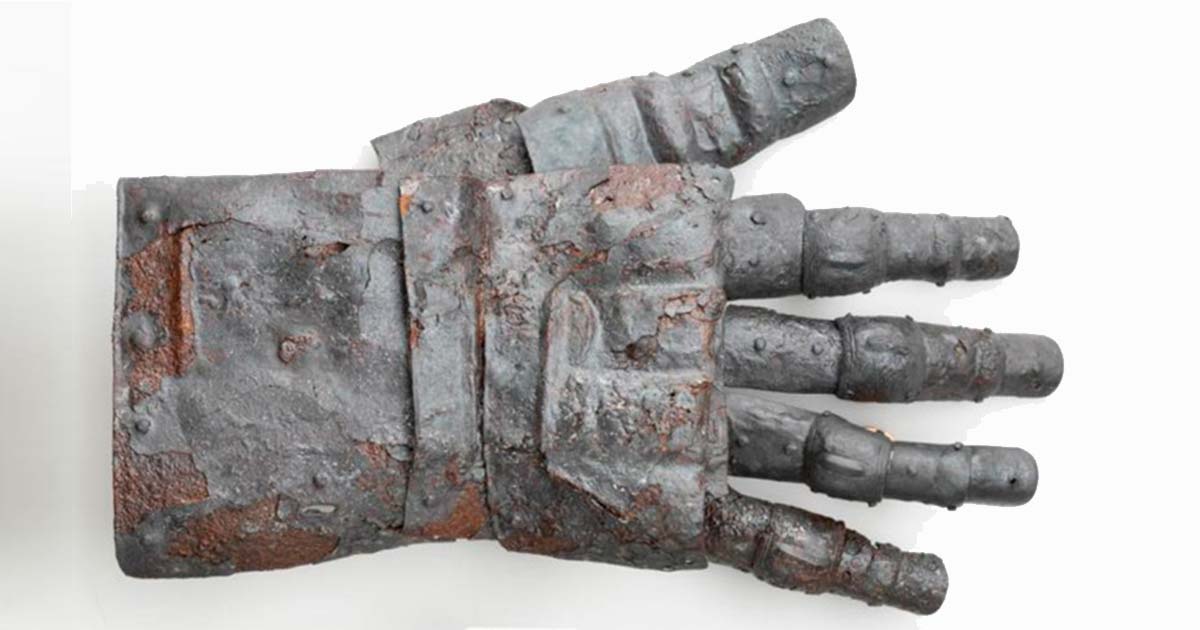Amazing Gauntlet from the 14th Century Discovered in Switzerland

In a remarkable find of ancient military technology, a team of cantonal archaeologists in Kyburg, Switzerland, has unearthed a completely preserved armored gauntlet dating back to the 14th century. The find was made during excavations southeast of Kyburg Castle, in what appears to have been a medieval weaving cellar that burned down in the same era. So what was it doing there?
It is believed there must have been forging carried out in the proximity of the cellar, as over 50 well-preserved metal objects, including tools like hammers, tweezers, pliers, and keys, as well as knives and bullet points were also found, reports the Zurich Canton website in a press release.
Among these artifacts, the fully intact gauntlet stands out as a particularly sensational discovery. Remarkably, it is accompanied by fragments of its counterpart for the other hand.
Archaeologists Unearth a Medieval Skeleton with a Prosthetic Hand
13th Century Cat and Goat Hide Shop Excavated in England
A Rare Medieval Gauntlet Example
The significance of this find cannot be overstated, as gauntlets from the 14th century are extremely rare, especially those with detailed designs and decorations. Prior to this, only five other gauntlets from this period had been discovered in archaeological digs across Switzerland, none of which were as well-preserved as the Kyburg gauntlet.
This gauntlet is a four-fold finger glove for the right hand, with iron plates arranged in a scale-like fashion and connected by side rivets. The intricate craftsmanship is evident in the way the metal components were riveted onto a leather or textile base, which was then sewn onto a textile finger glove.


The full, well-preserved gauntlet on the right, and part gauntlet on the left. (Construction Department, Zurich Canton)
The Historic Development of Armored Gauntlets
The development of early hand protection using metal plates can be traced back to the late 12th century, when mail sleeves from a knight’s hauberk (mail vest) were extended to form a mitt-like covering, explains the Darksword Armory website. This mitten, which was worn over a leather glove, featured mail armor for finger protection, complemented by a single metal plate. This style of hand protection remained popular until the late 13th century.
As the 14th century dawned, advancements led to the creation of mail gloves with individually separated fingers, extending from the sleeve’s metal plates. These enhancements offered better hand protection, extending from the wrist to the metacarpal bones, with a design that included plates overlapping around the joints of the fingers and thumb, and a cuff.
Originally, these armored gloves were called “hourglass gauntlets” due to their shape, which was wider over the back of the hand, tapering at the wrist and flaring out at the cuff. Typically, only the thumb had articulated mechanical plates, while the rest of the fingers were shielded by a solid top plate attached to mail or leather gloves.
This armor style was popular until the 15th century when the cuff design was modified to protect against sword thrusts through the flared opening, responding to the evolving design of medieval swords. Consequently, gauntlets saw a reduction in cuff size and an increase in articulated plate construction for enhanced wrist and finger movement.
It is this type of gauntlet, usually associated with the late 14th and 15th century that has been found in Switzerland.
Towards the end of the 15th century, the art of blacksmithing reached its zenith in both form and functionality. The late medieval period saw blacksmiths employ refined mechanics to further enhance the independence of movement for both the wrist and fingers.
16 Insanely Cool Suits of Armor
Advances in Medieval Knight Armor Could Not Match Weapon Technology!
This discovery raises intriguing questions about the typological development of gauntlets and the identity of the original owner, given the rarity of such finds in Switzerland.
For those eager to see this historical treasure, a replica of the gauntlet will be on display in the permanent exhibition at Kyburg Castle starting March 29, 2024. This will include a reconstruction to illustrate what this significant piece of armor would have originally looked like. The original gauntlet will also be available for public viewing at Kyburg, but only briefly; it will be on loan there for three weeks starting September 7, 2024, in celebration of European Heritage Day.